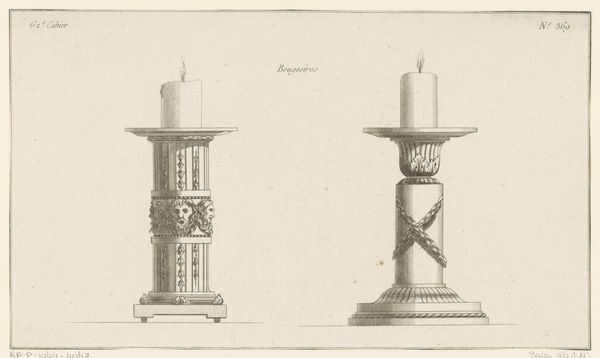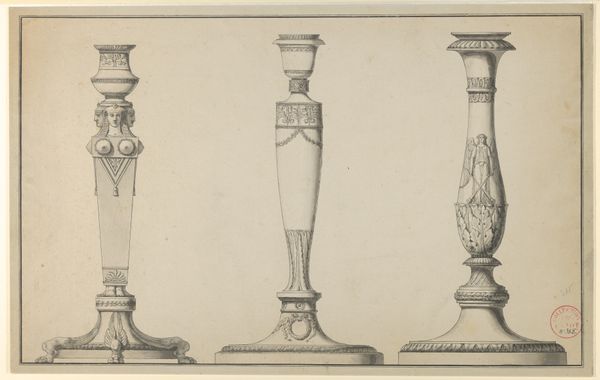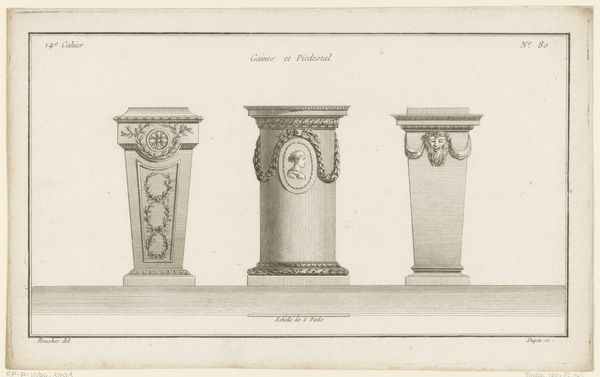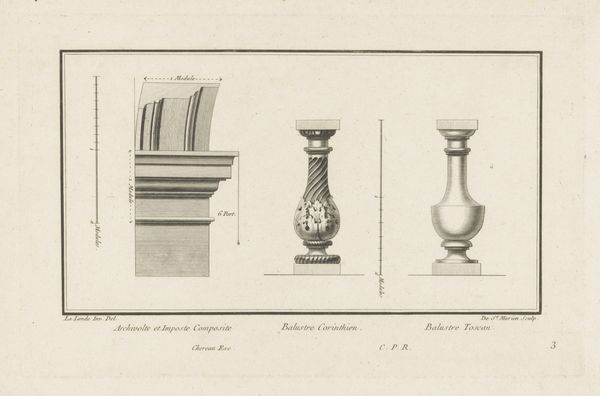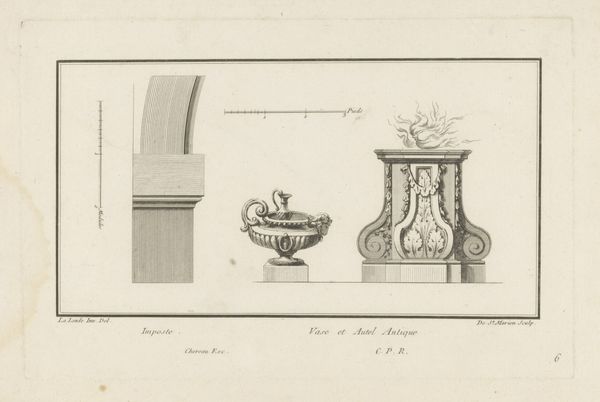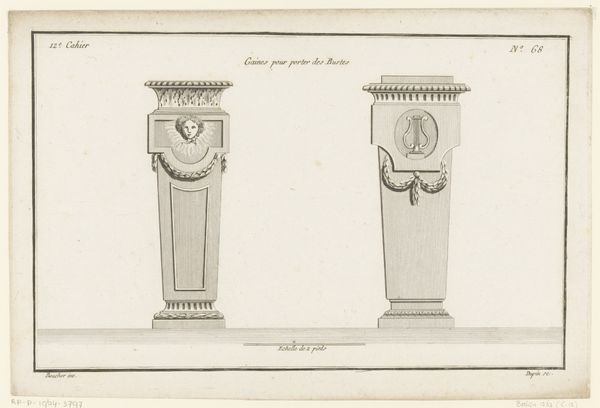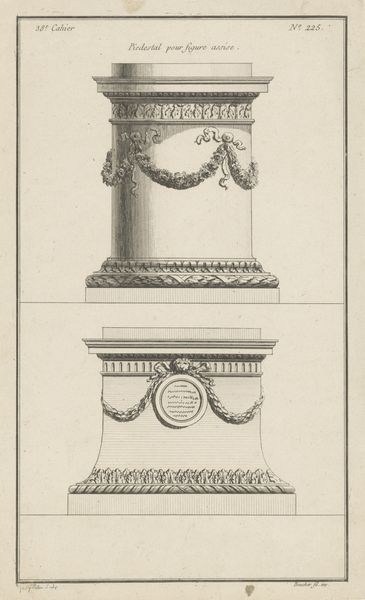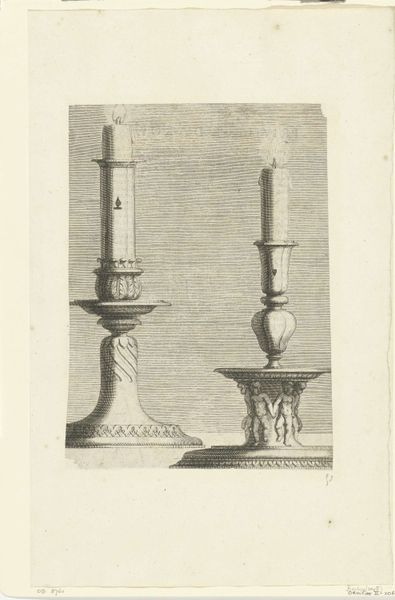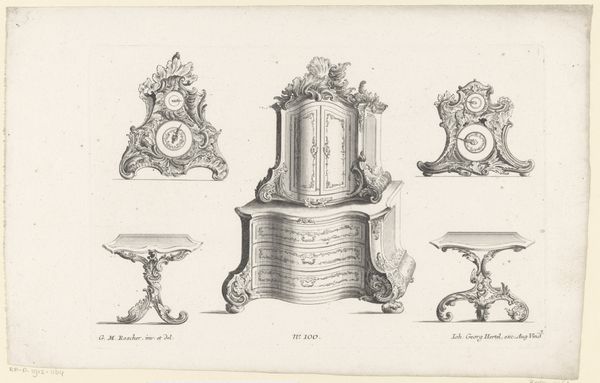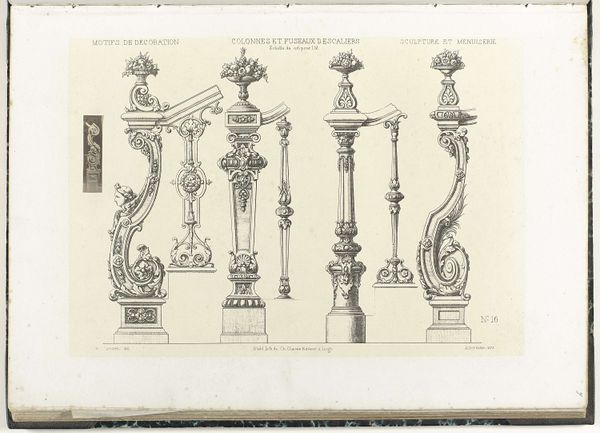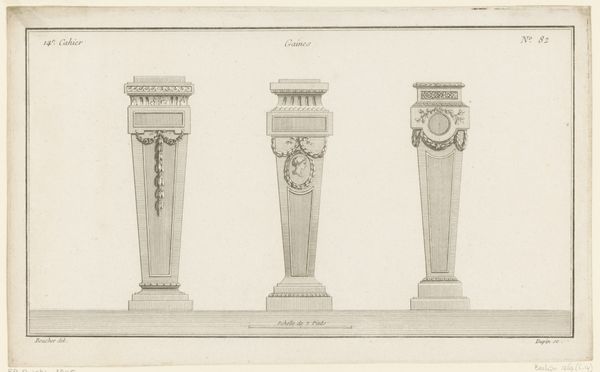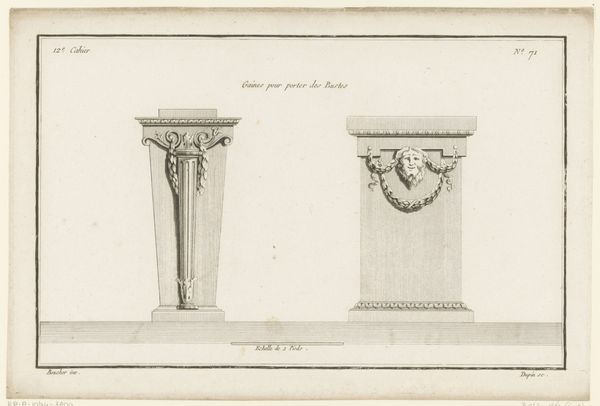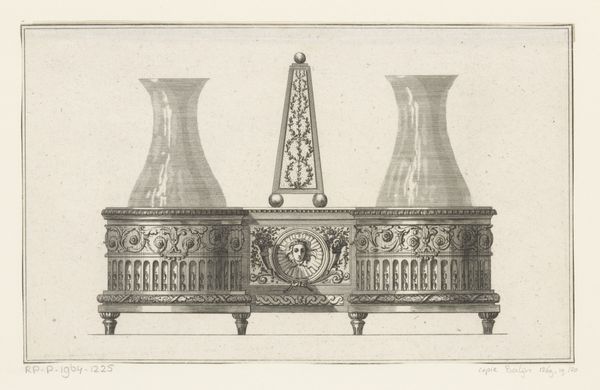
drawing, print, engraving
#
drawing
#
neoclacissism
# print
#
decorative-art
#
engraving
Dimensions: height 176 mm, width 299 mm
Copyright: Rijks Museum: Open Domain
Curator: Here we have a drawing from between 1772 and 1779, titled "Kandelaars met bladmotieven," or "Candelabra with Leaf Motifs," attributed to Jean Pelletier. It is currently held at the Rijksmuseum. Editor: My initial impression is one of restrained elegance. The precision of line, the cool tonality… It evokes a sense of formal, almost austere beauty. Curator: Indeed. Pelletier's work here is a fine example of neoclassical design principles at play. The symmetrical rendering of these two candelabra showcases the period's emphasis on order, balance, and idealized form, as directly inspired by classical antiquity. Observe how the lines of each candelabra’s fluting lead the eye up the form, resolving in precise decorative details, such as the namesake leafy wreaths. Editor: And look at how the leaves serve as both decoration and support for each structural design—one is an acanthus scroll near the base of the left design, while the leaves form fully rounded wreaths around the midsection of the other. I think that this elevation of plant-based motifs to this idealized Neoclassical form served as a pointed statement on the values of the Enlightenment. At the time, these would be placed indoors—juxtaposing the decorative “nature” against the rise of the factory. Curator: I agree that it underscores the era's fascination with both classical precedent and the natural world. However, I would say this drawing's restrained elegance represents the opulence of the period. Consider the purpose of such candelabra – to illuminate elite domestic interiors. While drawing certainly offers technical detail on structure, one wonders what the metalwork of this period added to this decorative structure’s messaging. Editor: It definitely invites a broader socio-economic interpretation, especially regarding how it might also reference environmental extraction during the Enlightenment period. Curator: Ultimately, Pelletier offers a window into the aesthetic values of the late 18th century and invites reflection on how those values intersect with social context and material realities. Editor: Exactly. I appreciate how the composition directs attention to broader contexts of Neoclassical interior design, its values, and material expressions.
Comments
No comments
Be the first to comment and join the conversation on the ultimate creative platform.
